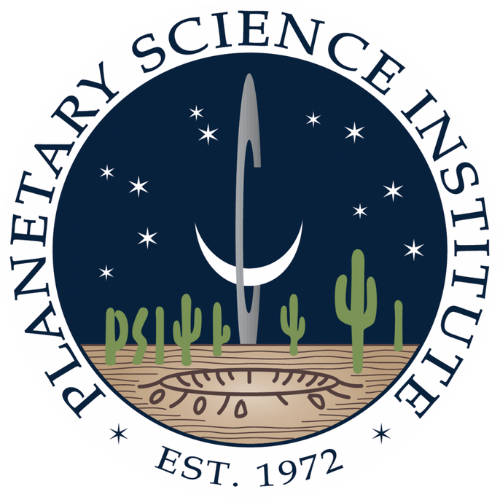Thomas H. Prettyman, Senior Scientist at the Planetary Science Institute, has been awarded funding from NASA to continue developing a groundbreaking way to study the deep interiors of asteroids and comets using high-energy muons and other particles generated by galactic cosmic rays.
PSI will be receiving more than $500,000 over two years from a Phase II NASA Innovative Advanced Concepts (NIAC) award to characterize the production of muons within asteroids and comets, develop the methods to determine the interior structure of these objects from radiographic and tomographic data, design a compact muon-imaging system and develop concepts for a muography mission. Emphasis will be placed on determining how the technology could be used on a future mission.
Prettyman’s team will pursue the development of muon radiography and tomography (“muography”) to probe the interior structure of asteroids and comets. Relativistic muons are created by the interaction of galactic cosmic rays near the surface of airless bodies.
Muons are subatomic particles similar to, but more massive than, electrons. High-energy muons can penetrate hundreds of meters of rock. On Earth, muons have been used to image the interior structure of the Great Pyramids and volcanoes.
“Our goal is to make a CAT scan of a small body orbiting the Sun,” Prettyman said. “Seeing the interior structure of an asteroid or comet will answer fundamental questions about their formation and evolution, and provide information needed for planetary defense, mining, and in situ resource utilization.”
Prettyman received NIAC Phase I funding for the project last year. The earlier research found that the production of muons in the solid surfaces of airless bodies is much smaller than in Earth’s atmosphere. Nonetheless, the flux of transmitted muons is sufficient to detect inclusions within an asteroid or comet in a reasonable period of time, ranging from hours to weeks, within reach of a NASA planetary mission.
The team includes PSI Director Mark Sykes, Steve Koontz from NASA Johnson Space Center, Richard Miller from the University of Alabama, Mike Nolan of Arecibo Observatory, Lawrence Pinsky of the University of Houston and David Lawrence of Johns Hopkins University Applied Physics Laboratory.
“To date, ideas for determining the interior structure of small bodies have involved surface explosions with seismometers and ground-penetrating radar,” said Co-Investigator Sykes. “Muography promises efficiencies by taking advantage of the constant background of high-energy particles striking an asteroid or comet surface from all directions.”
The NIAC program provides investment to support the development of breakthrough technologies needed to support NASA’s exploration plans beyond low-Earth orbit.
“I am looking forward to pursuing this new idea in the sprit of the NIAC program, which aims to turn science fiction into reality,” said Prettyman, a recently named NIAC Fellow. He is also the Principal Investigator of the NASA Dawn Discovery mission’s Gamma-Ray Neutron Detector, en route to the dwarf planet Ceres.
Media Contact
Alan Fischer
Public Information Officer
520-382-0411
[email protected]
Science Contact
Thomas H. Prettyman
Senior Scientist
[email protected]
